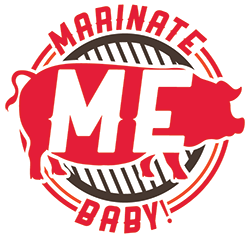Brining is a basic concept – however there are some simple rules that need to be adhered to ensure you and your family have an excellent taste experience – and obey the food laws of common sense
1. Brine’s should not be reused
Discard the brine solution after use. The brine will contain proteins, blood, and other stuff from the meat that soaked in it. From a food safety standpoint, it is not advisable to reuse brine, even if it’s boiled first.
2. Brining the bird – basics
This is my classic ‘Brine’ recipe – it can be varied and is for various applications – however the basis is the same.
Classic Brine
* 1 gallon Water
* 1 cup sugar (brown or white to your taste)
* 1 cup salt (sea salt)
* 1 orange fresh squeezed
* 2 limes fresh squeezed
* 1 lemon fresh squeezed
At this point it’s up to you… You could add a variety of aromatics to the brine for chicken I like:
* 3 sage leaves
* 1 bunch thyme leaves
It’s that simple – play with the aromatics to what you like. I will in the recipe section post variations on this model. Remember this is scalable for your Thanksgiving Turkey – (you will need more brine for that baby) – use non-reactive vessels – a 5 gallon bucket secured from your favorite provisions store is best for turkeys and for chickens I find the 2 gallon bucket both I can find easily at Kitchen Kneads in Ogden, UT.
This method turns out the moistest and delicious birds – heck it actually helps your chicken really taste like chicken is supposed to taste. You will never have that Thanksgiving bird any other way – it’s so simple and makes the cooking easy as pie!
3. How Brining Works
Pick up any book or visit any website that describes how brining works and you’ll probably see the principles of diffusion and osmosis mentioned.
The bottom line is that flavor brining results in meat that is more moist and flavorful than unbrined meat, regardless of which explanation you choose to believe.
4. Meats that benefit from brining
I feel that leaner cuts of meat with mild flavor are best candidates for brining. They are:
- Chicken: Whole, Butterflied, or Pieces
- Turkey: Whole, Butterflied, or Pieces
- Pork: Chops, Loin, Tenderloin, Fresh Ham
- Seafood: Salmon, Trout, Shrimp, Cod
Poultry is the most commonly brined meat because it is lean and gets quite dry if overcooked. Lean cuts of pork, get brined as well for the same reasons as poultry, except that in the case of pork, much of the fat (and thus flavor) has been intentionally engineered out of the breding by pork farmer’s intent on providing meat that appeal to health-conscious consumers.
5. Brined meats cook faster
Brined meats tend to cook faster than unbrined meat. My thoughts on this are as follows – by the brining process, so the heat has less work to do and the meat cooks faster and juicier.
So, if you’re used to cooking an unbrined chicken or turkey for a certain length of time, start checking the internal temp about 2/3 of the way into the normal cooking time.
Probably the best way to get better skin on brined poultry is to cook in the 325-350 degree range. The higher temperature gets the skin hot enough so that it browns.
6. Estimating the amount of brine to make
Place the meat in the container and cover with plain water. Remove the meat and measure the remaining water to determine the amount of flavor brine you need to make.
7. How long to brine?
The length of time meat soaks in a flavor brine depends on the type of meat and its size, as well as the amount of salt used in the brine — I recomend that the saltier the brine mixture, the shorter the soaking time. Here are some common brining times found in recipes:
- Whole Chicken – 3 to 8 hours
- Chicken Pieces – 1 to 2 hours
- Whole Turkey – 12 hours to 2 days
- Turkey Breast – 4 to 8 hours
- Pork Chops – 2 to 6 hours
- Pork Tenderloin – 2 to 8 hours
- Whole Pork Loin – 1 to 3 days

